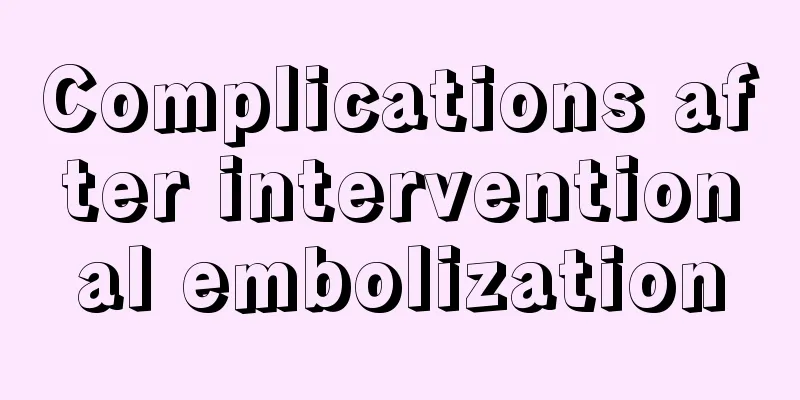Complications after interventional embolization

|
Uterine artery embolization surgery is an interventional treatment method. Uterine artery embolization is a technique in which the femoral artery is punctured under local anesthesia, a catheter is inserted, and under the guidance of a coaxial output guidewire under X-ray digital angiography, a super-selective catheter is placed into the uterine artery and an occlusive agent is introduced. For example, for uterine fibroids, if the patient wants to maintain the uterus, uterine artery embolization surgery can be performed. In addition, uterine artery embolization surgery is also a relatively good treatment. Since it is an interventional surgery, the trauma to the patient will be relatively small. So, what are the complications of interventional occlusion surgery? In medicine, complications are usually pathological conditions that stabilize three to six months after onset, while the short-term discomfort experienced by patients after surgery is usually called complications. The complications after occlusion surgery are often called post-occlusion syndrome, which are mainly manifested by fever and pain. These common symptoms will usually be gradually alleviated and disappear within a few days to a week through anti-infection treatment. Complications are a completely different concept. If uncontrollable events occur during surgery or when the disease itself develops to a certain stage, complications may persist for three to six months, and these complications are usually irreversible. Interventional blockage surgery is painful, but the extent of the pain is determined by many factors. The first factor is the size and number of the patient's tumors. The bigger the tumors are and the more numerous they are, the stronger the medicine will be, and the greater the pain will be. The second factor is the type of medication used. If you only inject blockers without taking chemotherapy drugs, the pain will be less. The pain will be greater if two or three chemotherapy drugs are given instead of just one. The third thing to consider is the patient's sensitivity to pain. Some people are more sensitive and feel a lot of pain after just a little injection of medicine. Interventional occlusion refers to the technology of occluding blood vessels through interventional technology. It is mostly used for blood circulation in hemorrhage, tumor embolization, embolization of intracranial aneurysms, etc. The materials of occlusion can be divided into permanent occlusion and temporary occlusion. Permanent occlusion cannot be reopened, while temporary occlusion can be dissolved and reopened. The success rate of interventional blockage surgery is still very high. After the operation, the puncture site should be well protected to prevent bleeding at the puncture site. Pressure bandage should be applied to the puncture site to promote blood circulation. Sandbags should be placed to compress the site for 6 to 8 hours. The patient should lie in bed and rest for 24 hours. In terms of diet, more protein-rich foods should be eaten, more vegetables or fruits rich in vitamins should be eaten, various vitamins and nutrients should be supplemented, and alcohol and spicy foods should not be consumed. |
<<: How many months is it appropriate to go to work during pregnancy?
>>: What does two lines on a pregnancy test stick mean?
Recommend
This preservative commonly found in cakes and breads is actually a "deadly assassin"?
It has been almost half a month since the Mid-Aut...
[First Aid Tips] Issue 42 - What to do if your nose is dry and bleeding?
Spring is here and the weather is drier. Sometime...
What are the benefits of practicing Ba Duan Jin? What age is suitable for practicing Ba Duan Jin?
Ba Duan Jin is an independent and complete set of...
What to eat during ovulation to enlarge breasts?
Studies have found that peanuts contain polyunsat...
What are the gastrointestinal inflammations in women
Gastrointestinal inflammation is a disease phenom...
What are the symptoms after cervical erosion suppositories?
Cervical erosion is a gynecological disease with ...
Female urine occult blood 30% normal
First of all, if occult blood is found during a p...
Menstruation is almost over and I have a dull pain in my lower abdomen
When the menstrual period is about to end, there ...
Causes of left hip pain in women
Many people actually cannot distinguish hip pain....
What should I do if there is blood in my menstrual period?
Some women have problems with their menstruation,...
Can I get pregnant by regulating my menstrual period?
We all know that there is a certain relationship ...
The cause of small pimples on the genitals
In fact, many people now have entered a sub-healt...
Three benefits of small breasts for women
People think that women with full breasts are mor...
Can pregnant women eat white sugar?
Pregnant women are a very special group. The diet...









